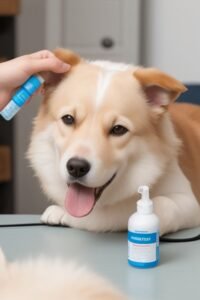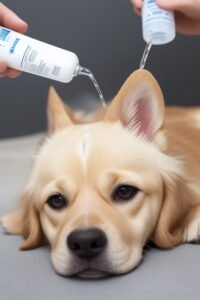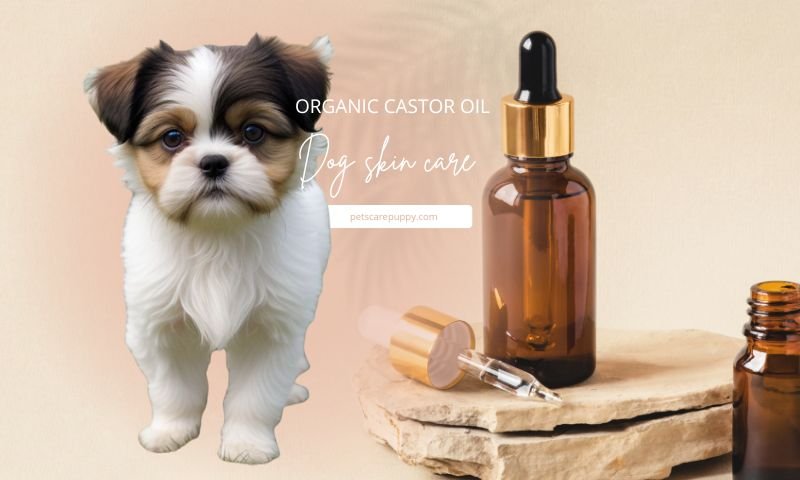Hydrogen Peroxide in Your Dog’s Ear: Safety, Risks, and Vet-Approved Alternatives

Introduction
Your dog won’t stop scratching their ear. As you rummage through your medicine cabinet, you spot hydrogen peroxide—a staple for disinfecting human cuts. But is it safe for your dog’s ears? The answer isn’t straightforward. While some pet owners swear by peroxide for cleaning, modern veterinary science warns against its use in delicate canine ears.

Hydrogen peroxide’s role in pet care is hotly debated. Once a go-to disinfectant, it’s now criticized for causing more harm than good. This guide dives into the science behind the controversy, explores lesser-known risks (like bacterial resistance), and shares vet-approved alternatives to keep your dog’s ears healthy.
What is Hydrogen Peroxide?
Hydrogen peroxide (H₂O₂) is a chemical compound with antiseptic and oxidizing properties. In households, it’s used to disinfect wounds, whiten teeth, and clean surfaces. However, its effervescent reaction—the fizz when applied—breaks down into water and oxygen, which can damage living tissue.
In veterinary care, peroxide’s oxidative nature is a double-edged sword. While it kills bacteria, it also destroys healthy cells, disrupts pH balance, and irritates sensitive ear canals. Dr. Lisa Carter, DVM, warns, “Peroxide doesn’t discriminate between harmful pathogens and beneficial flora. It’s like using a sledgehammer for a job that needs tweezers.”
Historical Use of Peroxide in Pet Care
In the early 20th century, hydrogen peroxide was a staple in pet first-aid kits. Its affordability and antimicrobial effects made it popular for cleaning wounds and ears. However, as veterinary medicine advanced, studies revealed its drawbacks.
By the 1990s, research highlighted peroxide’s corrosive effects on epithelial tissue. A 1998 Journal of Veterinary Medicine study found that repeated use in dogs’ ears led to chronic inflammation and delayed healing. Safer, pH-balanced alternatives like chlorhexidine and tris-EDTA solutions emerged, prompting vets to rethink peroxide’s role.
Risks of Using Peroxide in Dog Ears
Mild Risks
-
- Dryness & Irritation: Peroxide strips natural oils, causing itchiness and redness.
-
- pH Disruption: Healthy dog ears have a pH of 5.5–7.0. Peroxide (pH 4.5) can trigger microbial overgrowth.
Moderate Risks
-
- Worsened Infections: A 2021 Veterinary Dermatology study linked peroxide to aggravated otitis externa in 68% of cases.
-
- Bacterial Resistance: Peroxide’s incomplete disinfection can leave behind resilient pathogens.
Severe Risks
-
- Tympanic Membrane Rupture: Forceful application can rupture the eardrum, leading to deafness or vertigo.
-
- Vestibular Damage: Inner ear harm may cause head tilting, loss of balance, or nausea.
Red Flags
-
- Black, yellow, or bloody discharge
-
- Foul odor or swelling
-
- Sudden hearing loss
Vet-Approved Alternatives

Commercial Solutions
-
- Zymox Otic Enzymatic Solution: Lactoferrin and lysozyme target infections without harsh chemicals.
-
- Virbac Epi-Otic Advanced: pH-balanced formula with antifungal salicylic acid.
DIY Options
-
- Saline Rinse: Mix 1 tsp salt in 1 cup warm water. Apply with a cotton ball.
-
- Coconut Oil: Antifungal properties soothe mild yeast infections.
- Castor Oil: You can also put Castor oil on dog ear
Step-by-Step Ear Cleaning
-
- Inspect for redness or discharge.
-
- Soak a cotton ball in solution.
-
- Wipe outer ear folds (never insert into the canal).
-
- Reward your dog with a treat.
Infection Management
-
- Yeast: Use ketoconazole-based cleaners.
-
- Bacterial: Opt for tris-EDTA + antibiotic combinations.
Real-Life Case Studies
Case 1: A 5-year-old Labrador’s ear infection worsened after weekly peroxide use, leading to a $1,200 surgery for a ruptured eardrum.
Case 2: A Cocker Spaniel owner switched to Zymox, resolving chronic yeast infections in 3 weeks.
FAQs
Q: What if I already used peroxide?
A: Rinse the ear with saline and monitor for redness. Contact your vet if symptoms persist.
Q: Can diluted peroxide ever be safe?
A: Vets rarely recommend it. Safer alternatives exist.
Q: How to soothe itchy ears?
A: Apply chilled chamomile tea bags or vet-prescribed hydrocortisone wipes.
Conclusion
Hydrogen peroxide’s risks far outweigh its benefits for dog ears. Modern veterinary science offers safer, targeted solutions to protect your pup’s hearing and health. Bookmark this guide, invest in a vet-approved cleaner, and schedule regular ear check-ups. Your dog’s comfort is worth the extra care!
CTA: Share this guide with a fellow dog owner—it might save their pet’s ears!
SEO Meta Description: Wondering, “Can you put peroxide in a dog’s ear?” Discover vet-approved alternatives and risks of hydrogen peroxide for dog ear infections.
Internal Links:
Self Experience, Research, and Sources:
-
- American Veterinary Medical Association (AVMA)
-
- Journal of Veterinary Medicine, 1998
-
- Veterinary Dermatology, 2021

